Where have Hougoumont, La Haye Saint, and La Belle Alliance got to? The hexagoned bit of Belgium you fight over in this new low cost, low complexity wargame, may disorientate at first. Because developer, Hexes of War, has decided to truncate the name of the 2019 board game it’s ported, some bedroom Bonapartes may purchase expecting a cosy battle sim when, in fact, this is something much broader.
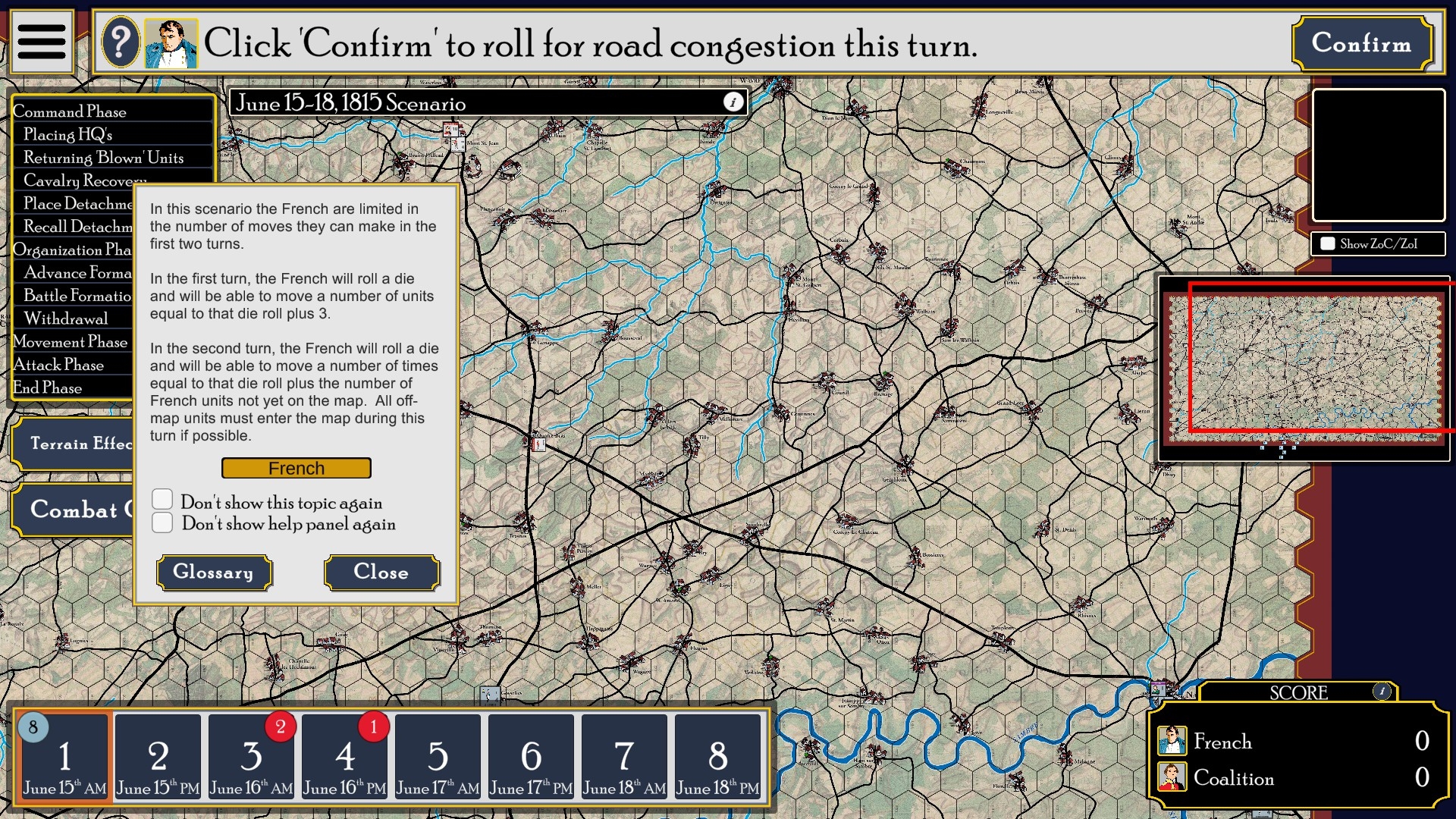
The longer of the two included scenarios, both of which are playable in SP and MP as either the French or the Coalition, runs for eight turns and covers the four days in which the Emperor tried and failed to defeat the two armies blocking his path to Brussels.
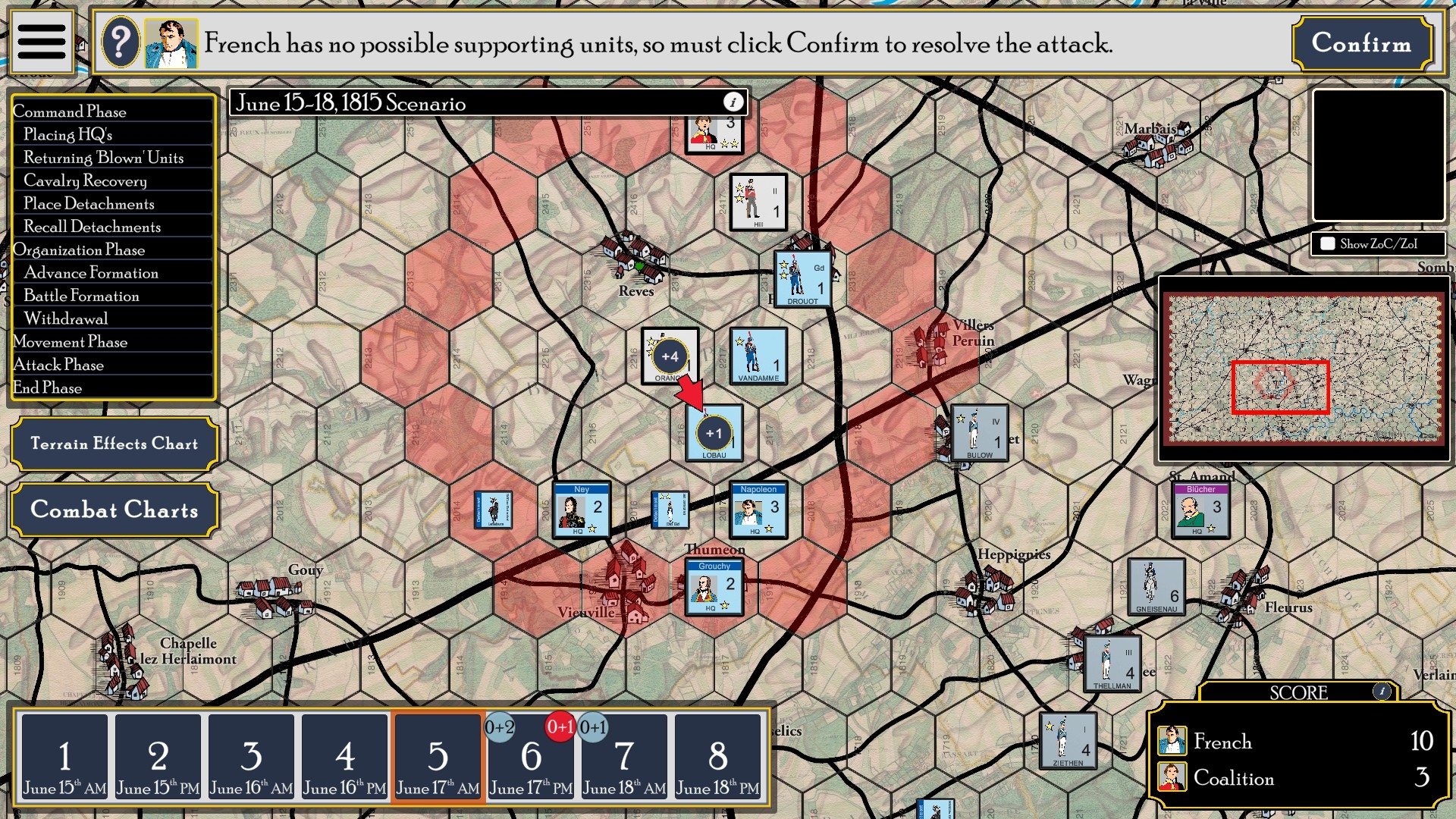
Thanks to mediocre AI*, missing Fog of War, and Mark Herman’s innovative approach to movement and attacking, history-mirroring clashes at Ligny, Quatre-Bras, Wavre, and Waterloo are unlikely. I’ve played four games to completion thus far, and the Mont-Saint-Jean hexagon and its neighbours have yet to witness bloodshed or even glimpse menacing manoeuvres. Does that geographical discrepancy indicate fundamental realism problems? Possibly, but there’s a liveliness and fluidity to Waterloo’s counter quadrilles that makes overlooking divergence relatively easy.
* Winning as Wellington/Blücher seems particularly easy, and unfortunately there are no difficulty settings to increase the challenge.

As in RBM Studio’s Gettysburg, an unconventional play-until-one-side-passes mechanic spices up movement and attack phases delightfully, and can lead to a side losing the majority of its fighting strength in a single turn. If the modified difference between two clashing corps’ dice rolls is relatively low, the defeated counter might get to retreat, or temporarily disappear from the board as ‘blown’. However, if a loser is thoroughly trounced, they’re ‘eliminated’ – a pretty big deal in a game as low on units as this one.
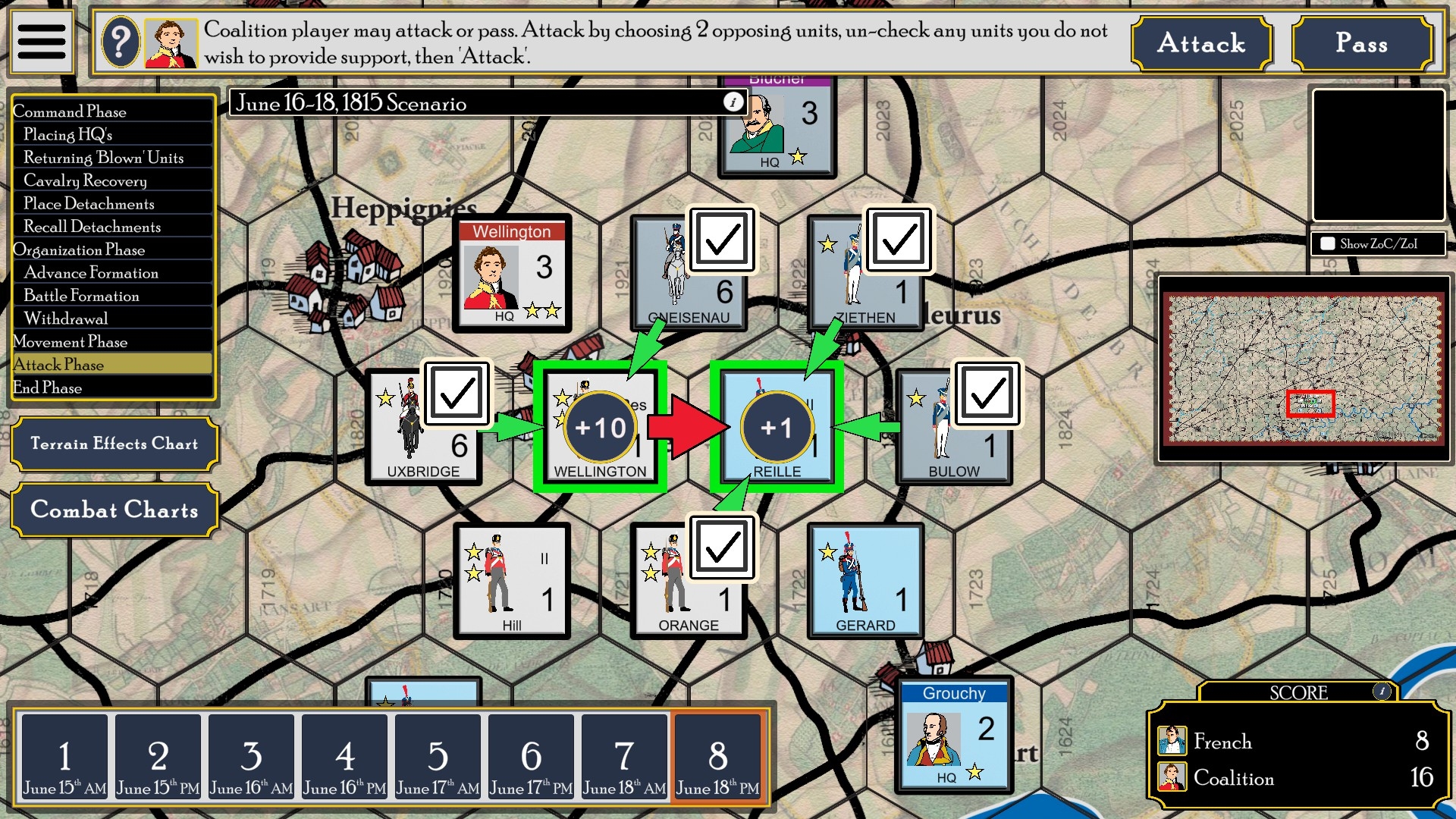
The main reason I haven’t played Gettysburg since putting it aside in January 2024, is its “dominant dice”. While Waterloo doesn’t share the all-or-nothing artillery mechanic of its ACW relative (apart from a placeable Grand Battery counter, artillery isn’t explicitly represented), it does feature the same questionable 1D6 combat resolution system.
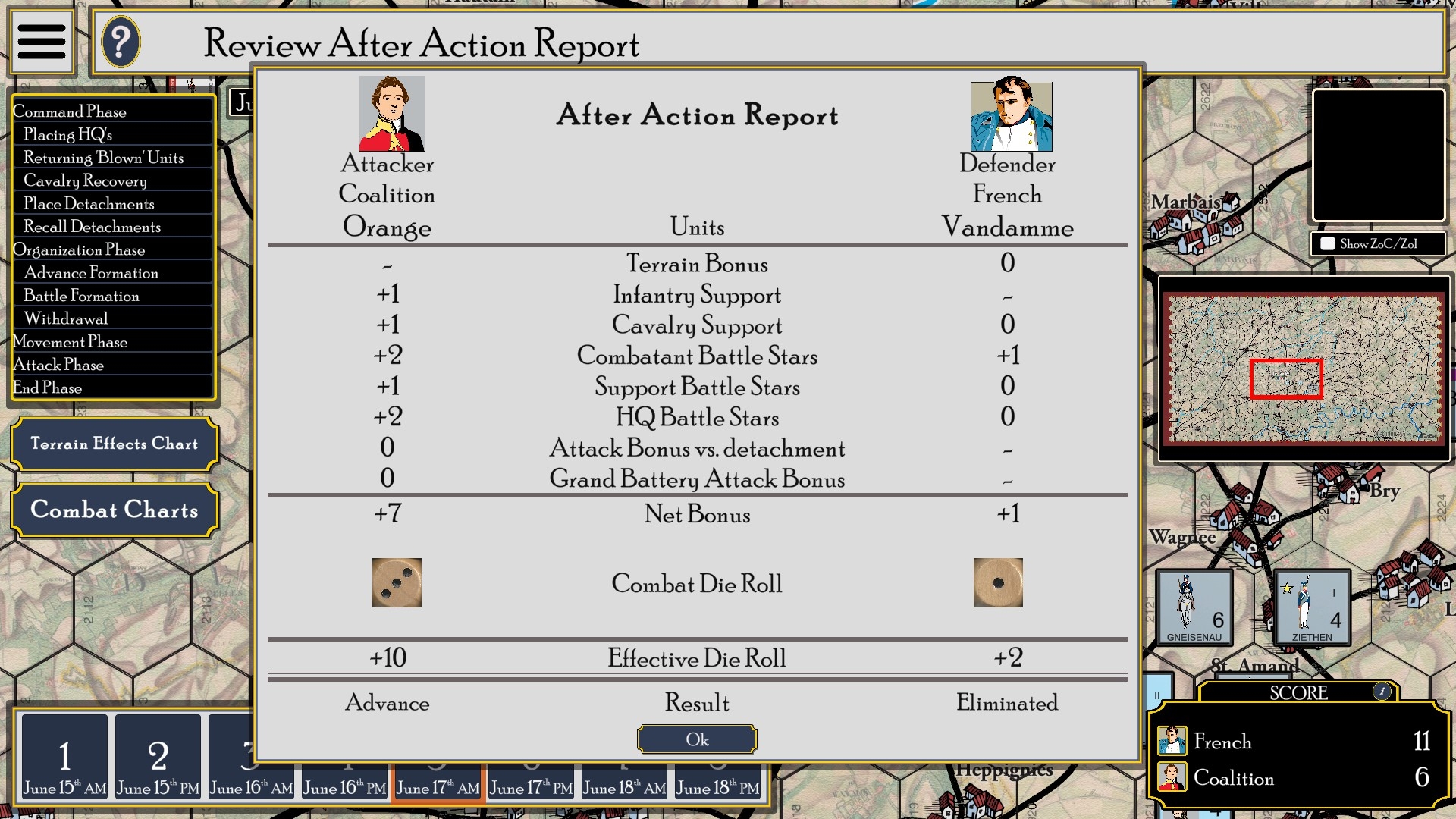
Essentially, when the player or the CPU orders an attack both the attacking corps and the defending one roll a single six-sided die. Modified by factors like unit quality, supporting units, terrain, and nearby HQs, the two rolls are then compared with the difference determining the outcome (stalemate, retreat, blown or eliminated). Even with a substantial on-paper advantage – lets say a +4 modifier compared to a +1 – serious against-the-odds setbacks are eminently possible with this approach. The hefty chance quotient ensures you’re always on the edge of your seat, but it does mean scenario outcomes are sometimes determined by luck rather than cunning.
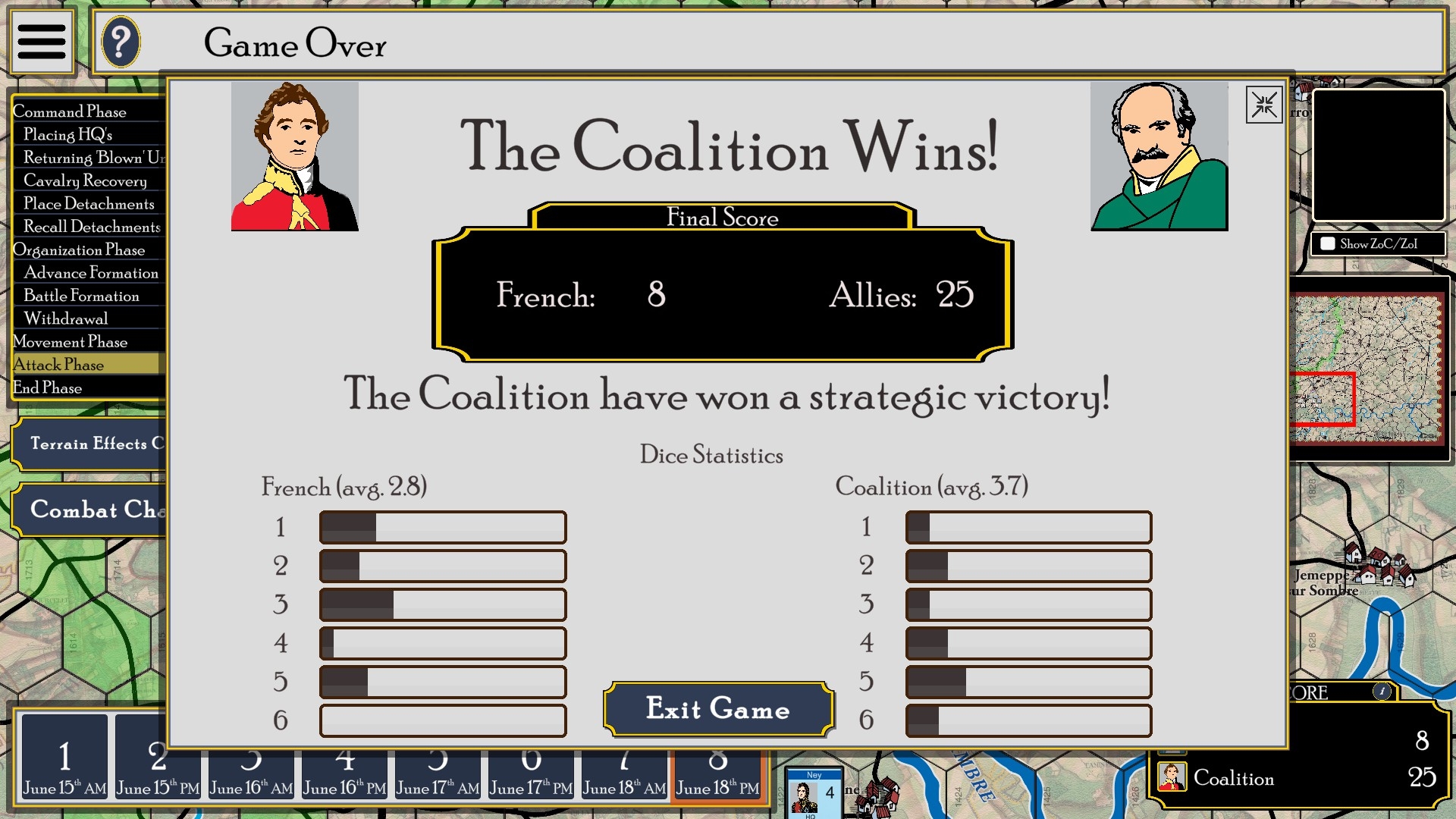
Perhaps conscious of the combat system’s potential to exasperate, wise Hexes of War put a dice roll summary on the victory/defeat screen. While these bald stats have the power to take the sting out of a swingeing defeat, they can, of course, also prick the pride generated by a spectacular victory*.
* According to Steam , only 0.1% of Waterloo players have secured the Coalition Strategic Victory achievement I bagged, with copious help from Lady Luck, yesterday.


I cheesed it by blowing up the railway tracks.